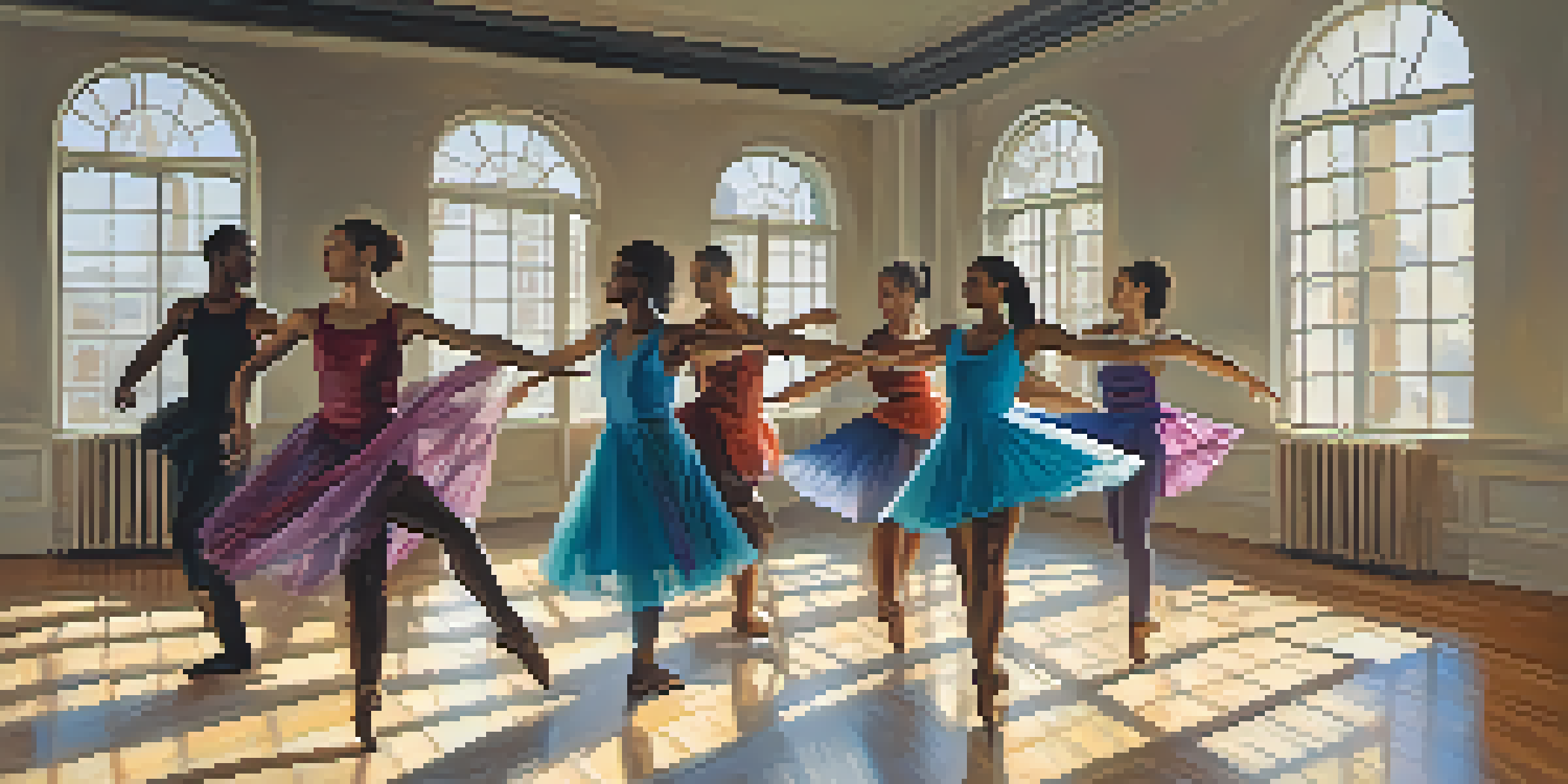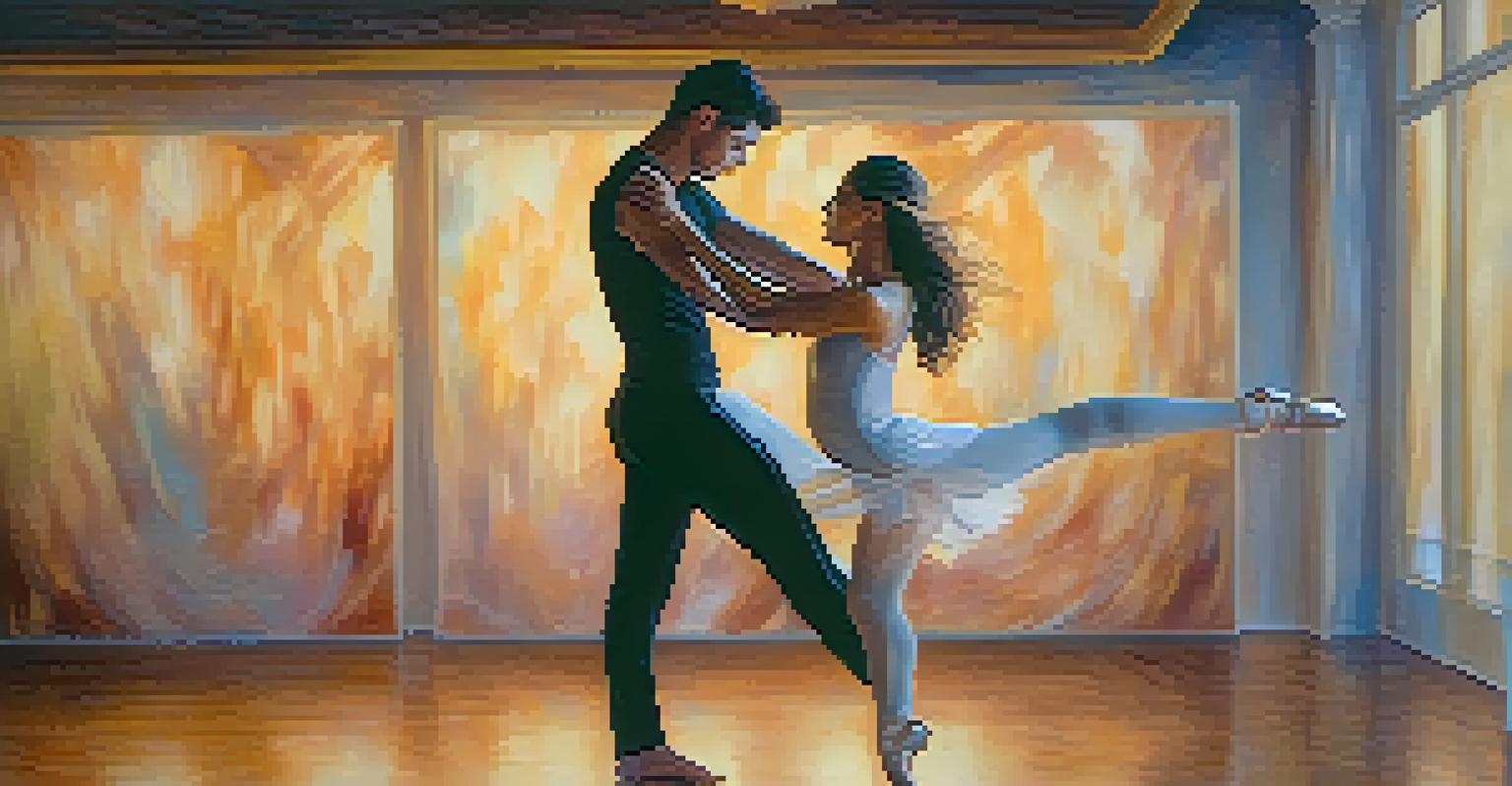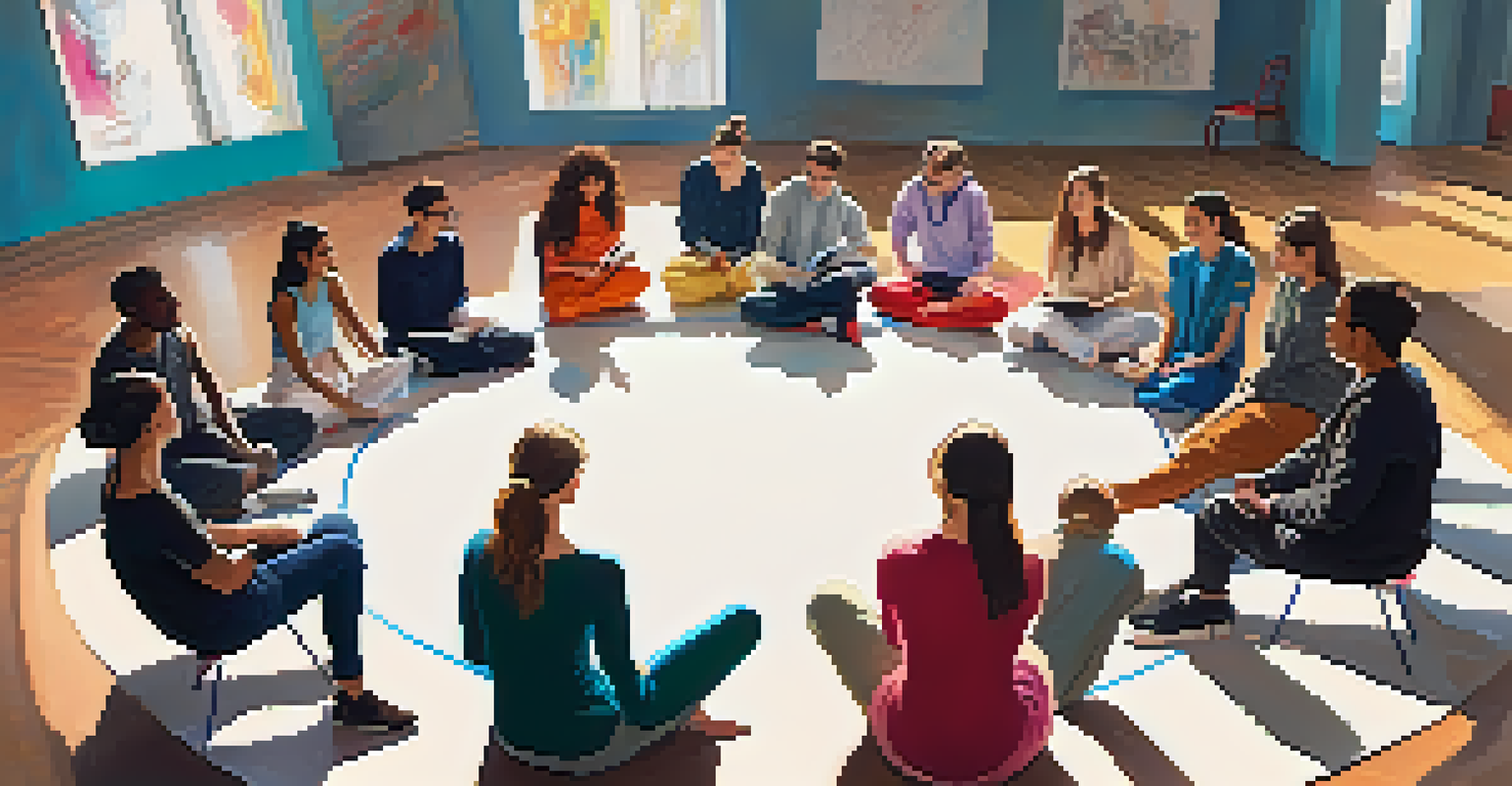The Creative Process Behind Successful Dance Collaborations

Understanding the Foundations of Dance Collaborations
Successful dance collaborations often begin with a clear understanding of each dancer's strengths and styles. This foundational knowledge allows collaborators to leverage their unique talents effectively. Just like a chef selecting ingredients that complement each other, dancers must find ways to harmonize their movements and expressions.
Collaboration allows us to know more than we are capable of knowing by ourselves.
It's essential for dancers to communicate openly about their artistic visions. This dialogue fosters trust and sets the stage for a creative partnership. When dancers share their ideas and inspirations, they can create a dynamic atmosphere where innovation thrives.
Additionally, establishing a shared goal is crucial for any collaboration. Whether it's preparing for a performance or creating a new piece, having a common objective helps to align efforts. Think of it as a roadmap guiding the dancers toward a shared destination.
The Role of Trust in Creative Partnerships
Trust serves as the bedrock of any successful dance collaboration. Dancers need to feel secure enough to take risks, explore new ideas, and challenge each other creatively. Without trust, even the most talented dancers can struggle to express themselves fully.

Building this trust often takes time and shared experiences. Engaging in activities outside of dance can help strengthen personal connections, making it easier to collaborate creatively. Imagine two friends who have shared countless adventures; their bond allows for deeper levels of understanding and creativity.
Trust is Essential in Collaborations
Building trust among dancers fosters a safe environment for creativity, allowing for honest feedback and personal growth.
Furthermore, trust allows for honest feedback, which is essential for growth. When dancers feel comfortable offering and receiving constructive criticism, they can refine their work and elevate the collaboration. This process is akin to sculpting; each piece of feedback can chip away at imperfections, revealing a masterpiece.
Exploring Different Movement Styles Together
One of the most exciting aspects of dance collaborations is the opportunity to explore various movement styles. When dancers from different backgrounds come together, they can create a unique blend of techniques and aesthetics. This fusion can lead to innovative choreography that captivates audiences.
The essence of dance is the expression of the human spirit. It’s the way we connect with each other and the world around us.
For instance, a contemporary dancer teaming up with a ballet dancer can create a piece that combines the fluidity of modern movement with the precision of classical ballet. This cross-pollination not only enhances the performance but also enriches each dancer's skill set. It's like mixing paint colors to create a completely new shade.
Moreover, experimenting with different styles encourages dancers to step outside their comfort zones. This exploration can lead to personal growth and a deeper appreciation for one another's artistry. The willingness to embrace new movements fosters a sense of adventure in the creative process.
The Importance of Collaboration in Choreography
Choreography thrives on collaboration, as it allows for diverse perspectives to shape the final product. When dancers contribute their ideas, the choreography becomes a tapestry woven from multiple voices and visions. This collaboration can lead to groundbreaking pieces that resonate deeply with audiences.
Creating choreography together often involves brainstorming sessions where movement ideas can flow freely. Dancers might take turns experimenting with phrases, allowing spontaneity to guide their creativity. Think of it as a jam session in music, where each participant adds their flair to the mix.
Embrace Diverse Movement Styles
Collaborating across different dance styles leads to innovative choreography and personal growth for all dancers involved.
Additionally, this collaborative process can break down barriers between performers. When each dancer has a stake in the choreography, they become more invested in the overall performance. This sense of ownership can elevate the energy on stage, creating a captivating experience for the audience.
Navigating Creative Differences with Respect
In any collaboration, creative differences are bound to arise. Dancers may have contrasting visions or preferences about movement styles, which can lead to friction. However, navigating these differences with respect is key to fostering a productive environment.
Open discussions about differing perspectives can lead to remarkable solutions. By listening to each other's ideas and finding common ground, dancers can blend their visions into something extraordinary. It's similar to a negotiation where both parties seek a win-win outcome.
Ultimately, respecting each other's artistry fosters a culture of collaboration rather than competition. This mindset encourages dancers to view their differences as opportunities for growth and enrichment. By embracing diversity, the collaboration can flourish and lead to innovative outcomes.
Creating a Collaborative Environment
A supportive environment is vital for nurturing creativity in dance collaborations. This space should encourage experimentation, risk-taking, and expression without fear of judgment. Just as a garden needs the right conditions to thrive, dancers require an atmosphere that fosters growth.
Establishing rituals or routines can help create this environment. For instance, starting rehearsals with a warm-up that includes improvisation allows dancers to connect and loosen up creatively. These practices can build camaraderie and set the tone for a collaborative spirit.
Celebrate Collaborative Success
Recognizing and celebrating the outcomes of collaborative efforts strengthens bonds and motivates dancers for future projects.
Additionally, encouraging breaks during rehearsals can help rejuvenate creativity. Stepping away from the dance floor can allow ideas to marinate and often lead to breakthroughs. Think of it as letting dough rise before baking; sometimes, the best results come from allowing time for ideas to develop.
The Impact of Technology on Dance Collaborations
In today's digital age, technology plays a significant role in enhancing dance collaborations. From video conferencing to choreographic apps, dancers can connect and create regardless of their physical locations. This accessibility opens doors to collaborations that might not have been possible otherwise.
Utilizing technology can also streamline the creative process. Dancers can record rehearsals, share feedback, and refine choreography in real-time. This convenience allows for more efficient use of time and can elevate the quality of the final performance.

Moreover, technology can serve as a source of inspiration. Dancers can explore online resources, watch performances from around the world, and discover new techniques. This exploration can invigorate their creative process and lead to exciting new directions in their work.
Celebrating the Outcome of Collaborative Efforts
Once the creative process reaches its conclusion, it's time to celebrate the fruits of collaboration. Whether it's a performance, video, or installation, acknowledging the hard work and creativity of all involved is essential. This celebration can strengthen bonds and motivate dancers for future projects.
Sharing the final product with an audience creates a sense of accomplishment. Watching their collaborative efforts come to life on stage can be incredibly rewarding for dancers. It's a moment where all the trust, experimentation, and creativity culminate into a shared experience.
Lastly, reflecting on the collaboration allows dancers to recognize what worked and what could improve in future endeavors. This reflection can foster a culture of continuous learning and growth, ensuring that each collaboration is a stepping stone toward even greater artistic achievements.